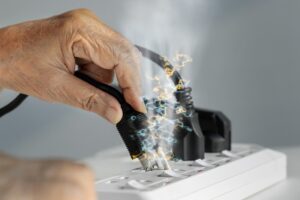When it comes to protecting your home’s electrical system and sensitive electronics, installing a whole-house surge protector is one of the smartest decisions you can make. But many homeowners ask the same question: What size whole-house surge protector do I need? The answer depends on a few key factors, including your home’s electrical service size, the type of appliances you use, and the frequency of electrical storms or utility surges in your area.
Understanding Surge Protector Ratings
Whole-house surge protectors are typically rated by surge capacity, which is measured in kiloamps (kA). This rating indicates how much energy the device can absorb before failing. For most homes, a surge protector rated between 40kA and 80kA will provide sufficient protection. However, homes with larger service panels (200 amps or more), expensive electronics, or multiple HVAC units may benefit from a unit rated up to 120kA.
Here’s a basic guideline:
- 40kA–60kA: Suitable for smaller homes or those with minimal electronics.
- 60kA–80kA: Standard protection for average-sized homes with typical appliances.
- 100kA–120kA: Ideal for larger homes or homes with valuable electronics and frequent surge exposure.
Factors to Consider
- Panel Size: Check your main electrical panel’s amperage. Most modern homes have 150- to 200-amp service. Larger panels may require higher-capacity surge protection.
- Appliance Type: If your home includes high-end kitchen appliances, smart home systems, or multiple computers and TVs, invest in a surge protector with a higher kA rating.
- Frequency of Surges: Homes in areas with frequent thunderstorms, utility fluctuations, or power outages benefit from higher surge protection ratings.
- UL Certification: Choose a device certified to UL 1449 standards. This ensures it has been tested for safety and performance.
- Clamping Voltage: Lower clamping voltage (ideally 400V or less) means the device activates earlier to protect your system.
Installation Matters
Surge protectors should always be installed by a licensed electrician. Proper installation ensures optimal protection and compliance with local codes. When choosing a whole house surge protector in Buffalo, NY, you want a professional who understands local electrical infrastructure and can recommend the right unit for your needs.
Backup Layers of Protection
While a whole-house surge protector is your first line of defense, consider combining it with point-of-use protectors for sensitive electronics like TVs, gaming systems, and computers. Also, make sure your home’s grounding system is up to code—surge protectors rely on proper grounding to divert excess voltage safely.
Protect Your Home the Right Way
Investing in the right size whole-house surge protector can prevent costly damage to your appliances, HVAC systems, and electronics. Don’t wait for a power surge to find out your home isn’t protected.






